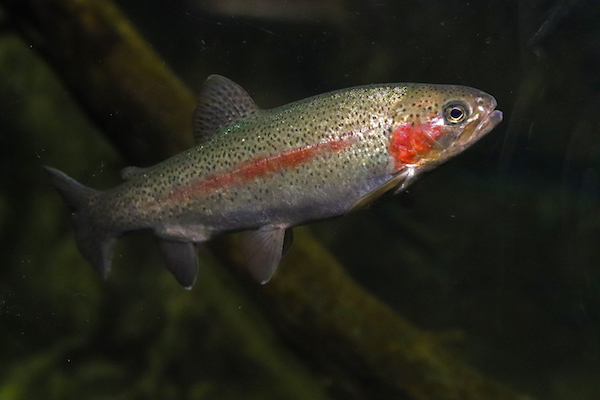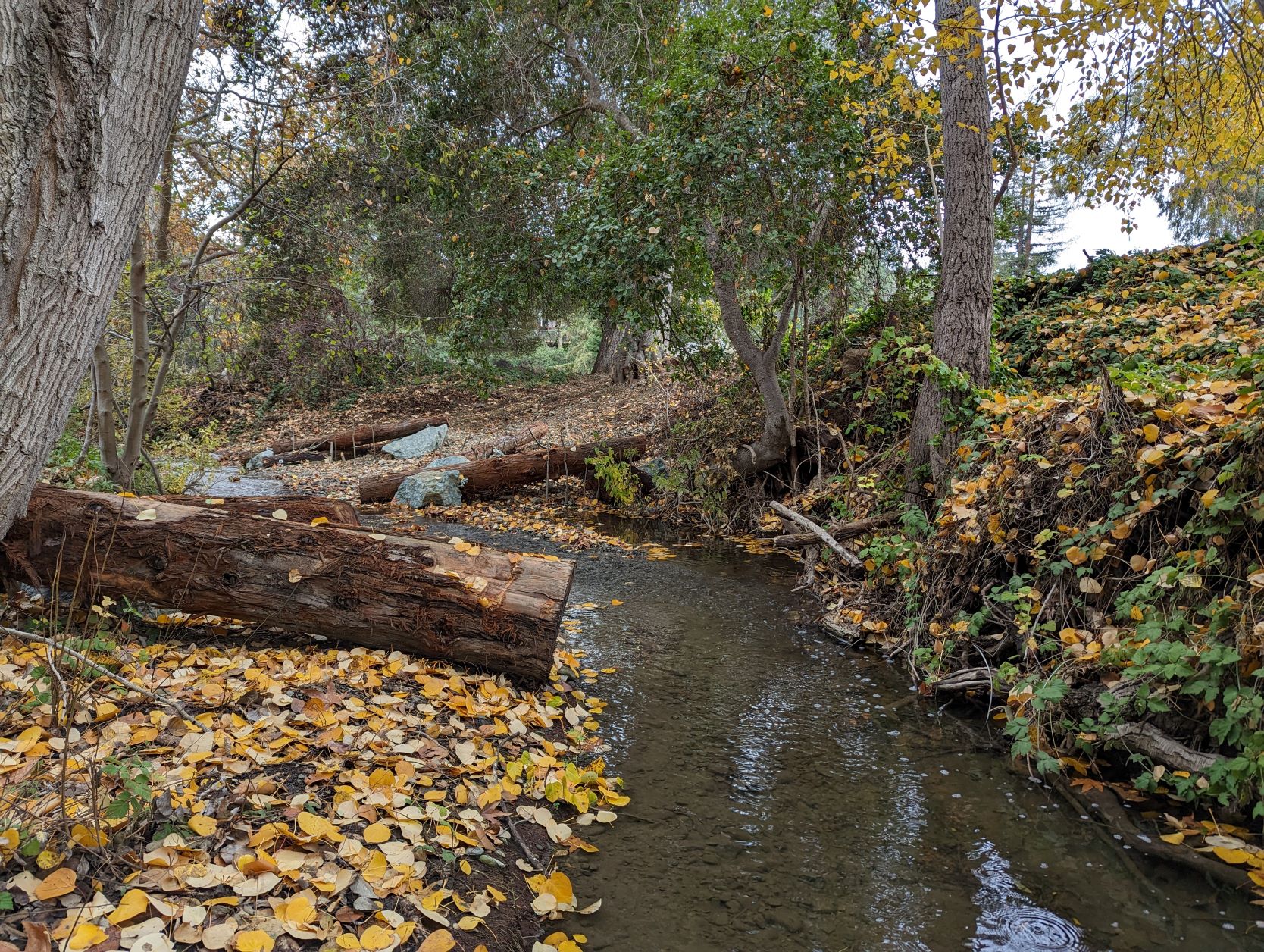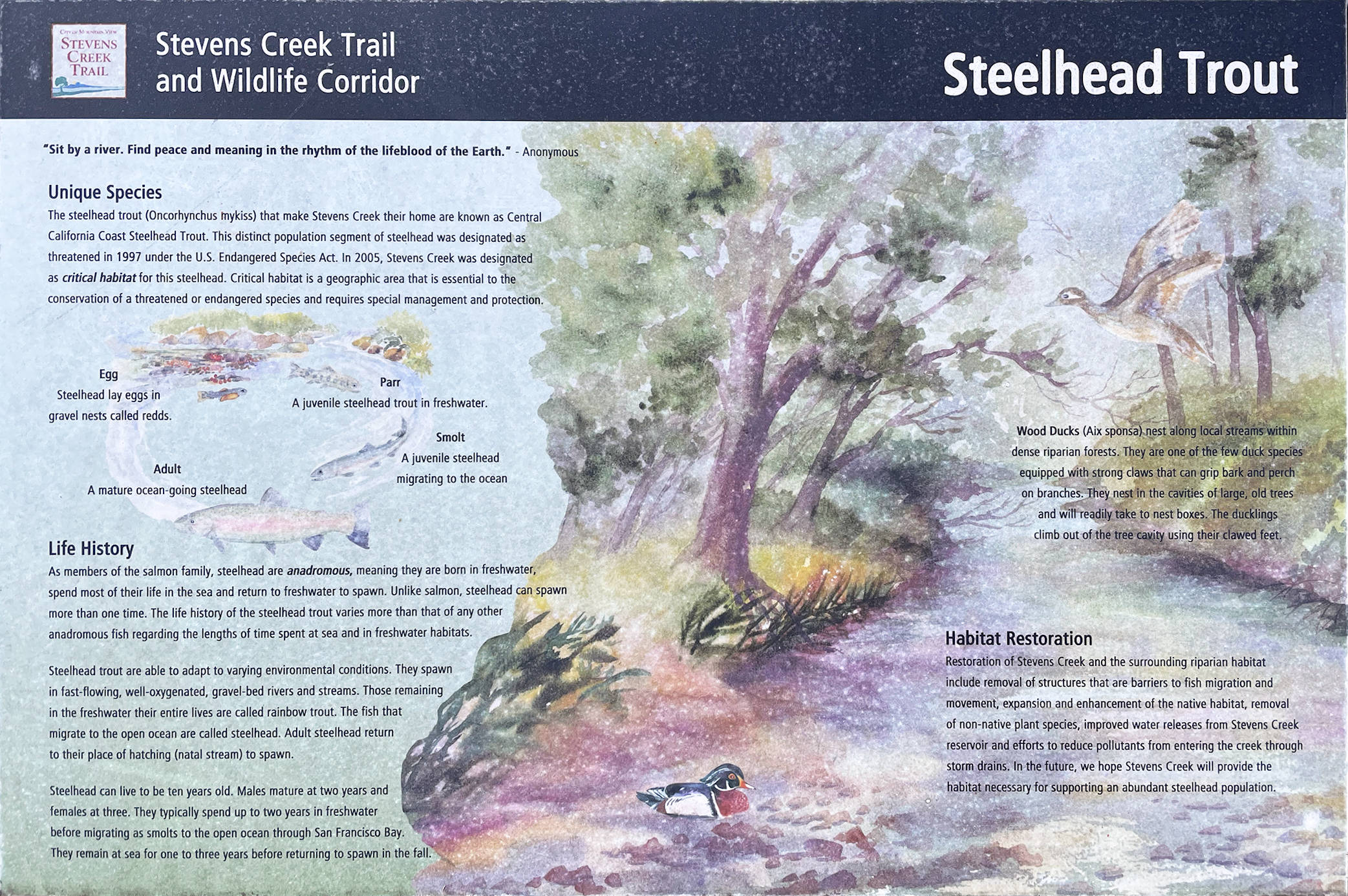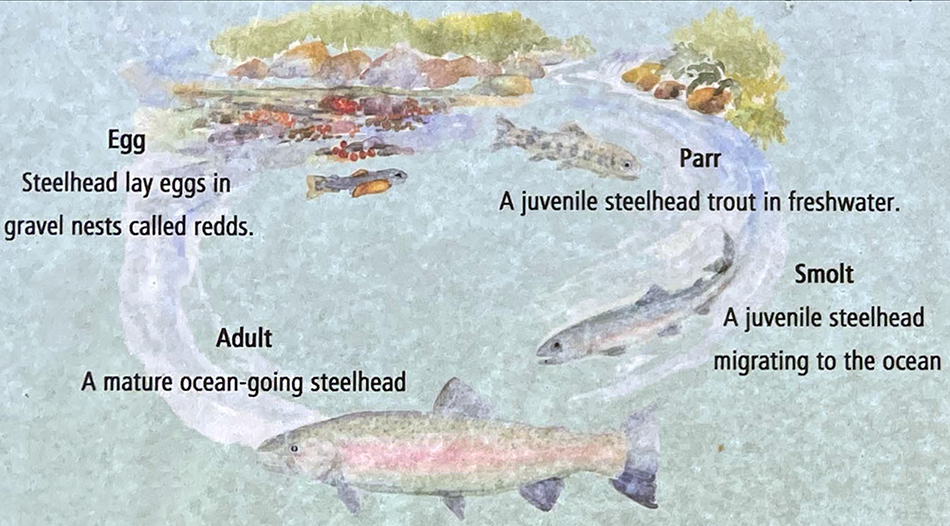In 2018, The Friends of Stevens Creek Trail created a partnership with the cities of Mountain View, Cupertino, Sunnyvale and Los Altos, as well as the County of Santa Clara, Midpeninsula Regional Open Space District and Deep Cliff Golf Course to undertake this project to remove one of many barriers to fish passage in Stevens Creek. To fund this project, our partners helped provide matching funds to enable us to apply for and receive a grant from Valley Water to get us to a total of nearly $180K.
Months after our grant was approved, regulatory agencies changed their requirements and insisted we perform additional site and design analyses. This added months to the project timeline and raised pre-construction costs by over $40K. Some, but not all, of this funding gap has been closed through generous donations from the Los Altos Community Foundation, Guadalupe Coyote Regional Conservation District, Bonneville Environmental Fund and Deep Cliff Golf Course. The plan is to remove a low water vehicle crossing that creates a passage barrier for juvenile steelhead (Oncorhynchus mykiss), a federally listed threatened species. The barrier is located one mile downstream of Stevens Creek Reservoir, in the Deep Cliff Golf Course in Cupertino.
Stevens Creek supports a population of federally listed steelhead. Below the Stevens Creek Reservoir the creek is a designated critical habitat for Central California Coast steelhead. According to studies, regional steelhead populations have declined to an estimated 10% of their historical abundance and steelhead in Bay Area streams are at continued risk of extinction due to multiple factors including impassable dams, large drop structures, flat bottom culverts, urbanization, reduced flows and degraded water quality.

Oncorhynchus mykiss
Steelhead / Rainbow Trout
After completing a project to improve fish passage in Stevens Creek within Deep Cliff Golf Course, we need to do followup annual monitoring to be sure it continues to be stable and perform as designed. We need volunteers to help with this. Please check this volunteer description for more details.
Steelhead and other fish species will now find it easier to pass through the section of Stevens Creek that runs by the Deep Cliff Golf Course in Cupertino. On October 24, 2022, contractors working for the Friends of Stevens Creek Trail completed a project to restore natural fish habitat and remove a concrete slab spanning the creek. The concrete had been a barrier to the upstream migration of juvenile steelhead trout, a threatened species under the Endangered Species Act.
Steve Powell, an environmental scientist who consulted on the project, explained, “The fish passage was designed with salmonids (particularly steelhead) in mind, but it will be important for the movements of all other fish species in the creek such as stickleback, minnows, and suckers. Allowing the fish access to more habitat allows them increased opportunity to locate suitable reproduction and feeding sites and maintain viable populations.” When fish were temporarily relocated during construction, numerous juvenile rainbow trout were found near the concrete slab, attesting to the importance of improving passage in this reach of the creek.
The completion reflects over 3 years of hard work and the collaboration of multiple agencies.
Richard McMurtry of the Santa Clara County Creeks Coalition came up with the idea for the project and was a technical consultant throughout its duration. He said, “Since my first conversation with the Friends over seven years ago, I have been impressed by their steadfast effort to bring this habitat improvement project to fruition.”
“It is hoped that this project contributes to ongoing efforts to restore a self-sustaining population of steelhead trout in the Stevens Creek Watershed,” said Rajiv Mathur, Executive Director of the Friends.
The project was made possible by generous contributions from numerous private and public agencies: Santa Clara Valley Water District (Valley Water), Midpeninsula Regional Open Space District, Cities of Mountain View, Cupertino, Sunnyvale and Los Altos, Santa Clara County, Deep Cliff Golf Course, Bonneville Environmental Foundation, Google, Inc., Guadalupe Coyote Resources Conservation District, and Los Altos Community Foundation.

Stevens Creek Fish Passage Restored within Deep Cliff Golf Course
Woody debris and smaller drops are components of the improved passage for juvenile
steelhead trout.
The Friends of Stevens Creek Trail invites qualified contractors to submit responses to the final Request for Cost Proposal for the implementation of the Stevens Creek Steelhead Passage Improvement Project. The project site is located on Stevens Creek in the City of Cupertino. The project consists of the removal of an instream concrete slab to facilitate the upstream migration of juvenile steelhead trout and the installation of large wood, boulder ballast, and native plants to improve aquatic habitat.
The Final Request for Cost Proposal is available for review using the following link (RFCP_Stevens_Creek_final-2022-06-10.pdf). A pre-bid site meeting will be held; interested parties should click to email our Executive Director, Rajiv Mathur for an invitation.
The Friends is pleased to announce that we are now ready to accept construction bids for the Stevens Creek Steelhead Fish Passage Project. We hope to begin this project in September and complete it in October.
The Friends of Stevens Creek Trail are soliciting cost proposals from contractors to implement this small, in-stream fish passage improvement project. A site visit will be scheduled in early May and bids will be due approximately two weeks after the site visit.
Notice was received from the California Department of Fish and Wildlife approving our application. This was the last step in a year-plus long process to get the necessary regulatory approvals for the project. Unfortunately, to protect native wildlife, we only have a narrow window in which to do the construction and this was too close to that window to do construction in 2021, pushing the project into 2022.
We are also pleased to announce that we were able to secure several additional grants to cover the increased design costs incurred as a result of regulatory rule changes during the project that boosted the design and permitting costs substantially.
Valley Water have filed their CEQA Exemption notice with Santa Clara County, clearing a major regulatory hurdle for this project. We have filed our Notice of Intent and 100% Basis of Design documents with the San Francisco Regional Water Quality Control Board which is the next step in the approval process. We also recently completed a Historical Properties Survey Report that concluded that our project would not impact any Native American sites, a precondition for approval from the Army Corps of Engineers.
The preliminary design (“35% Basis of Design”) for the Fish Passage Project was completed on schedule in January 2021.
Before construction can begin, we need regulatory approval from: the SF Regional Water Quality Control Board, the California Department of Fish and Wildlife, the Army Corps of Engineers, Valley Water and the National Marine and Fisheries Service.
Transcript of the text:
Sit by a river. Find peace and meaning in the rhythm of the lifeblood of the Earth.
- Anonymous
The steelhead trout (Oncorhynchus mykiss) that make Stevens Creek their home are known as Central California Coast Steelhead Trout. This distinct population segment of steelhead was designated as threatened in 1997 under the U.S. Endangered Species Act. In 2005, Stevens Creek was designated as critical habitat for this steelhead. Critical habitat is a geographic area that is essential to the conservation of a threatened or endangered species and requires special management and protection.

Steelhead Trout Information Board
Egg: Steelhead lay eggs in gravel nests called redds.
Parr: A juvenile steelhead trout in freshwater.
Smolt: A juvenile steelhead migrating to the ocean.
Adult: A mature ocean-going steelhead.

Steelhead Lifecycle
(click to view larger)
As members of the salmon family, steelhead are anadromous, meaning they are born in freshwater, spend most of their life in the sea and return to freshwater to spawn. Unlike salmon, steelhead can spawn more than one time. The life history of the steelhead trout varies more than that of any other anadromous fish regarding the lengths of time spent at sea and in freshwater habitats.
Steelhead trout are able to adapt to varying environmental conditions. They spawn in fast-flowing, well-oxygenated, gravel-bed rivers and streams. Those remaining in the freshwater their entire lives are called rainbow trout. The fish that migrate to the open ocean are called steelhead. Adult steelhead return to their place of hatching (natal stream) to spawn.
Steelhead can live to be ten years old. Males mature at two years and females at three. They typically spend up to two years in freshwater before migrating as smolts to the open ocean through San Francisco Bay. They remain at sea for one to three years before returning to spawn in the fall.
Wood Ducks (Aix sponsa) nest along local streams within dense riparian forests. They are one of the few duck species equipped with strong claws that can grip bark and perch on branches. They nest in the cavities of large, old trees and will readily take to nest boxes. The ducklings climb out of the tree cavity using their clawed feet.
Restoration of Stevens Creek and the surrounding riparian habitat includes removal of structures that are barriers to fish migration and movement, expansion and enhancement of the native habitat, removal of non-native plant species, improved water releases from Stevens Creek reservoir and efforts to reduce pollutants from entering the creek through storm drains. In the future, we hope Stevens Creek will provide the habitat necessary for supporting an abundant steelhead population.
This information sign is located between El Camino Real to the North and Sleeper Ave. to the South.
Look for this sign along the west side / creek side of the trail where the trail and fence are close to the creek.
Closest entry: Sleeper Ave.
Show on Google map or in Google Street View.